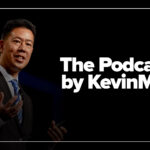Medical education is a long and arduous route and can take from twelve to sixteen years of education which includes three to four years of undergraduate degree, one to two gap years before medical school, four years of medical school and three to seven years of residency training.
To address this shortage, we have come up with solutions for creating three-year medical schools, starting tracks for physician assistants/associates and nurse practitioners. The average total medical graduate debt is close to $250,000. There is an urgent need to optimize medical training. Current approaches of three-year medical schools by the Consortium of Accelerated Medical Pathway Programs (CAMPP) do not go far enough.
Additionally, with the current administration’s focus on cutting spending at the cost of the welfare of patients, there is a risk that they could propose replacing the physician workforce with PAs and NPs and provide them unsupervised, unrestricted practice rights, putting patient safety at risk.
The current political climate and attacks on education, research, and Medicaid in a short time span of less than three months create uncertainty about Medicare and residency slots. It is imperative that we plan and come up with solutions to optimize medical training without impacting patient care and exacerbating health care disparities. There is a real concern that in the name of reducing national debt and efficiency, the physician workforce might be reduced and replaced by non-physician providers.
The rest of the world offers Bachelor of Medicine, Bachelor of Surgery (MBBS), which can be completed in approximately five years.
Many post-baccalaureate pre-medicine programs are one year long, and new medical schools offer three-year tracks, meaning medical students could graduate medical school with adequate relevant training in a total of four years after high school. Additionally, our northern bordering country, Canada, offers family medicine residency programs that can be completed in just two years.
With a simple change of starting medical education earlier, we could potentially produce the next generation of physicians in a shorter amount of time with a smaller student loan burden.
This could potentially help alleviate burnout because of reduced training time and lowered stress from an increased total student loan burden. Even assuming five years of MBBS, which is standard across the world, and two years of family medicine residency, it ends up being seven years of training. That means one can become a primary care physician in about seven years versus twelve years, with a total saving of five years of tuition fees, government loans, and living expenses.
Lowering training time could also lead to lower burnout rates and address barriers for people wanting to pursue medicine who are dissuaded by longer training times, as it could impact family planning. The Dialectical Behavioral Therapy (DBT) concept of dialectics applies here: We can reduce costs and deliver excellent patient care without compromising quality.
Ankit Jain is a medical student.



















![How genetic testing redefines motherhood [PODCAST]](https://kevinmd.com/wp-content/uploads/Design-3-190x100.jpg)
![A pediatrician's reckoning with applied behavior analysis [PODCAST]](https://kevinmd.com/wp-content/uploads/Design-2-190x100.jpg)


